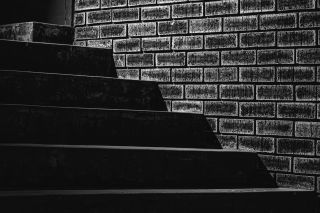How to manage what you can't believe you can handle.
Post published by Seth J. Gillihan Ph.D. on Jun 25, 2015 in Think, Act, Be
 When
I was a kid, I was terribly afraid of the dark. I still remember the
feeling I had walking down the basement stairs of my grandparents’
house, or getting up in the middle of the night to go to the bathroom.
My worst fear was of some indefinable something that
lay beyond fear: Would I get so scared that I’d actually see something
freaky? Could I in fact go crazy from terror, or even scare myself to
death?
When
I was a kid, I was terribly afraid of the dark. I still remember the
feeling I had walking down the basement stairs of my grandparents’
house, or getting up in the middle of the night to go to the bathroom.
My worst fear was of some indefinable something that
lay beyond fear: Would I get so scared that I’d actually see something
freaky? Could I in fact go crazy from terror, or even scare myself to
death?I hear echoes of this “fear of what’s beyond fear” in many of the anxiety conditions I treat, and most clearly in panic disorder. First, a quick description: Most of us at some point will have at least one panic attack, which is a sudden surge of fear along with physical symptoms, such as a racing heart, shortness of breath, or feeling faint. But having panic attacks does not indicate a disorder; one must also really fear having more panic attacks. Generally, one will worry that the panic signifies something terrible like “having a heart attack” or “going crazy.” Panic attacks become problematic when we’re so afraid of them that we alter our lives to avoid them. For example, one may stop using elevators, taking public transportation, or driving over bridges if these situations are tied to panic.
If you have ever experienced a panic attack, you know they are miserable: There’s a gripping fear, a sense of impending doom, and an overwhelming drive to escape the situation.
In addition to the experience itself, panic in Panic Disorder usually triggers a fear that something else—something beyond panic—is going to happen. We imagine that whatever it is will be qualitatively different from the panic alone, such as:
- I will pass out while driving and crash into someone.
- My tunnel vision will turn into blindness.
- I’ll get so panicked on a bridge that I’ll jump off it.
- I’ll lose my mind and do something horribly embarrassing.
The best tested treatment for panic disorder—cognitive behavioral therapy (link is external)—focuses on training the mind to understand that panic is just panic, no less and no more. With practice and hard work, we can move through our fear and our expectation of something worse than panic.
What makes panic overwhelming is what we imagine will happen. When we conquer our belief that panic is going to include something worse, we’re free to face the panic itself. People tend to find that they can deal with a panic attack when it is stripped of its most terrifying forecasts.

Source: stevepb/Pixabay
Our minds repeatedly create ghosts that we treat as real, and that we believe will be more than we can manage. When we face our lives as they actually are, we find we are enough.
没有评论:
发表评论